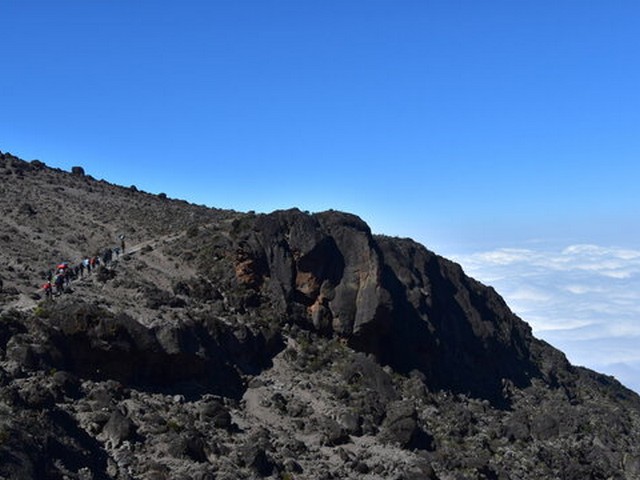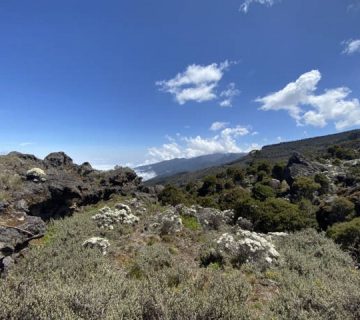Capturing the Summit: Using GoPros and Action Cameras on Kilimanjaro
Introduction: The Thrill of Kilimanjaro Through a Lens
Imagine standing at the roof of Africa, the world spread out beneath you, a tapestry of sky, rock, and ice. Climbing Mount Kilimanjaro is a journey through diverse climates, breathtaking landscapes, and personal discovery. At the Kilimanjaro Centre for Trekking and Ecotourism (KCTE), we understand that every moment on Kilimanjaro is precious and worth capturing. That’s why many climbers are now choosing to bring GoPros and other action cameras to document their ascent. In this post, we’ll dive into the best practices for using these dynamic devices to capture your Kilimanjaro adventure, ensuring that you can relive every step of your journey for years to come.
Harnessing the Power of Action Cameras on Your Climb
Choosing the Right Gear
When preparing for a Kilimanjaro trek, selecting the right action camera can make all the difference. GoPros are renowned for their durability, versatility, and high-quality output. They are designed to withstand extreme environments, making them perfect for the varying climates of Kilimanjaro—from the rainy foothills to the icy summit.
Preparing Your Equipment
Before you embark on your climb, familiarize yourself with your camera’s settings. Understand how to switch between modes quickly—be it video, photo, or time-lapse—so you can capture the essence of Kilimanjaro in various formats. Ensure your batteries are fully charged and consider carrying spare ones, as cold temperatures can drain battery life faster than usual.
Mounting Techniques for Optimal Footage
To truly capture the expansive beauty of Kilimanjaro, consider using a variety of mounts:
- Head straps or helmet mounts offer a first-person perspective, ideal for immersive video as you tackle the challenging terrain.
- Chest mounts provide a lower, more stable point of view, capturing your arms and legs in action.
- Extendable stick mounts can be great for selfies with the stunning backdrop or for angles you can’t get otherwise.
Experiment with different positions to find what best captures your experience while keeping your hands free for climbing.
Navigating Challenges: Tips for Using Cameras at High Altitudes
Battery Management
Cold weather is a notorious battery killer. Keep your spare batteries in an inner pocket of your jacket to keep them warm. Only take them out when you need to use them. Additionally, turning off unnecessary features like Wi-Fi or Bluetooth can help conserve power.
Dealing with the Elements
Kilimanjaro’s environment can be dusty, wet, and cold. Protect your camera using a waterproof case or a lens anti-fog insert to prevent moisture buildup inside the camera housing. This will keep your lens clear and your images crisp, no matter the weather.
Capturing the Spirit of Kilimanjaro
Documenting your climb isn’t just about recording your surroundings; it’s also about capturing the spirit of your adventure. Record snippets of your group encouraging each other, the laughter shared during breaks, and the collective excitement of approaching the summit. These moments are as precious as the panoramic views.
Ethical Considerations and Respecting the Environment
When using any type of camera on Kilimanjaro, it’s vital to maintain respect for the natural environment and local customs. Avoid leaving any equipment behind and be cautious not to disturb the wildlife. Always follow the guidelines set by your KCTE guides to ensure a responsible and fulfilling trekking experience.
Why Book Your Climbing Adventure with KCTE?
At Kilimanjaro Centre for Trekking and Ecotourism, we’re not just about guiding you to the summit; we’re about creating an immersive experience that you’ll want to relive again and again through your stunning photographs and videos. Our expert guides will help you identify the perfect moments and settings to use your action cameras, ensuring that you come back with a truly emblematic representation of your climb.
In Summary: The Ultimate Souvenir
Whether you are an amateur photographer or an enthusiastic storyteller, using GoPros and action cameras on Kilimanjaro allows you to capture and bring home the ultimate souvenir: your experience. The journey to Kilimanjaro’s summit is fleeting, but the memories you capture will inspire you and others for a lifetime.
Ready to Capture Your Kilimanjaro Adventure?
Embark on your trekking journey with Kilimanjaro Centre for Trekking and Ecotourism. Not only will you conquer the highest peak in Africa, but with your camera in tow, you’ll capture every inspiring moment. Contact us today to book your climb and start preparing for a journey you’ll never forget!
FAQs: Using GoPros and Action Cameras on Kilimanjaro
Can I charge my camera batteries during the trek?
While opportunities are limited, solar chargers can be a feasible option. Discuss with your KCTE guide for more specific advice based on your trekking route and accommodation.
What is the best type of GoPro for climbing Kilimanjaro?
We recommend a GoPro with robust battery life and good resolution (at least 4K) to capture high-quality videos and photos. The GoPro Hero series is a popular choice among climbers.
How can I prevent my camera from freezing at the summit?
Keep it close to your body heat when not in use and consider using insulated camera bags. Switching batteries frequently can also help.
Are there any restrictions on where I can film or take photos?
Yes, certain areas may have restrictions to protect wildlife or local customs. Your KCTE guide will inform you of any specific restrictions during your climb.
Capture your adventure in stunning detail and relive your Kilimanjaro experience for years to come. With KCTE, your journey to the top is just the beginning!




